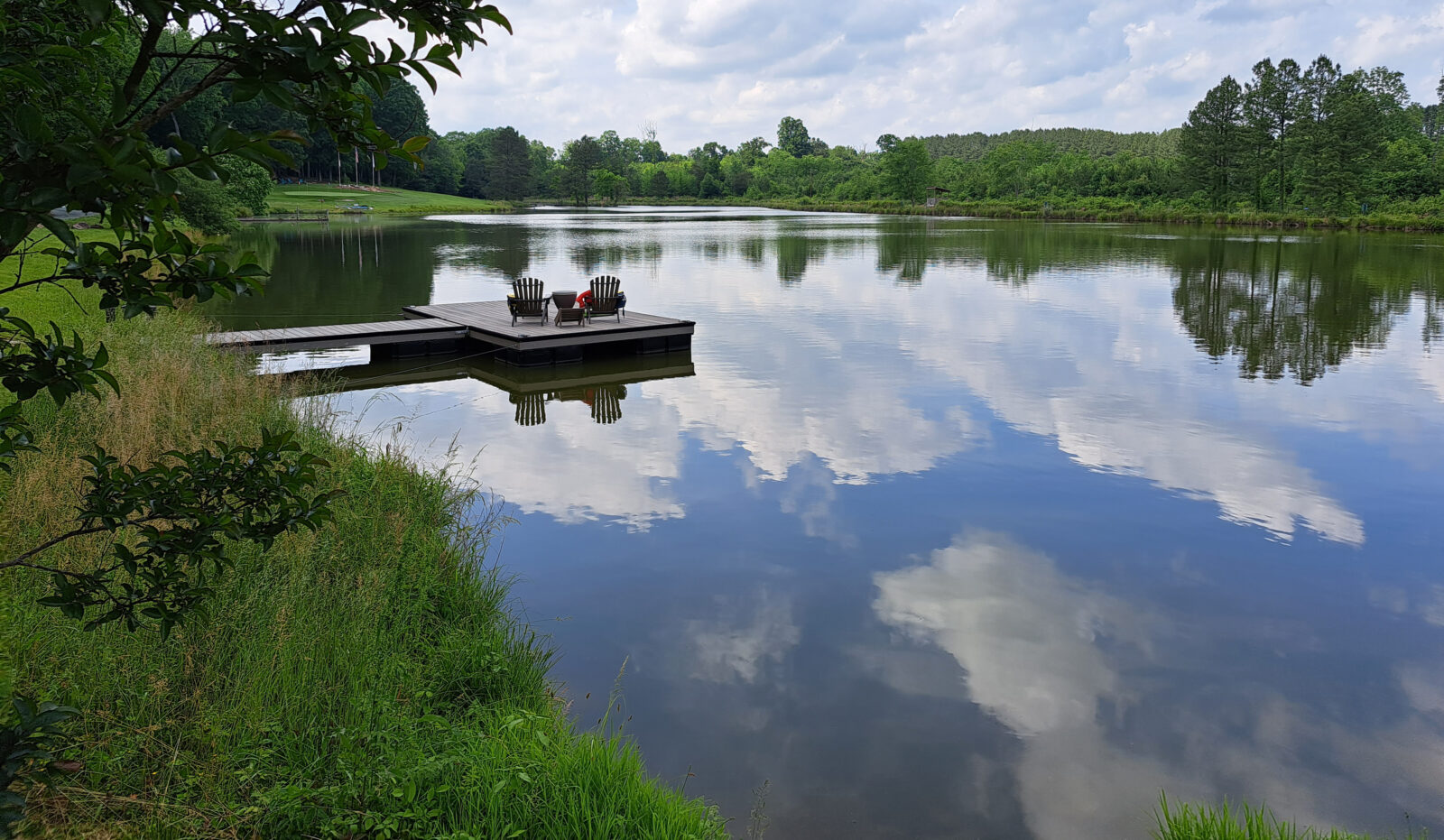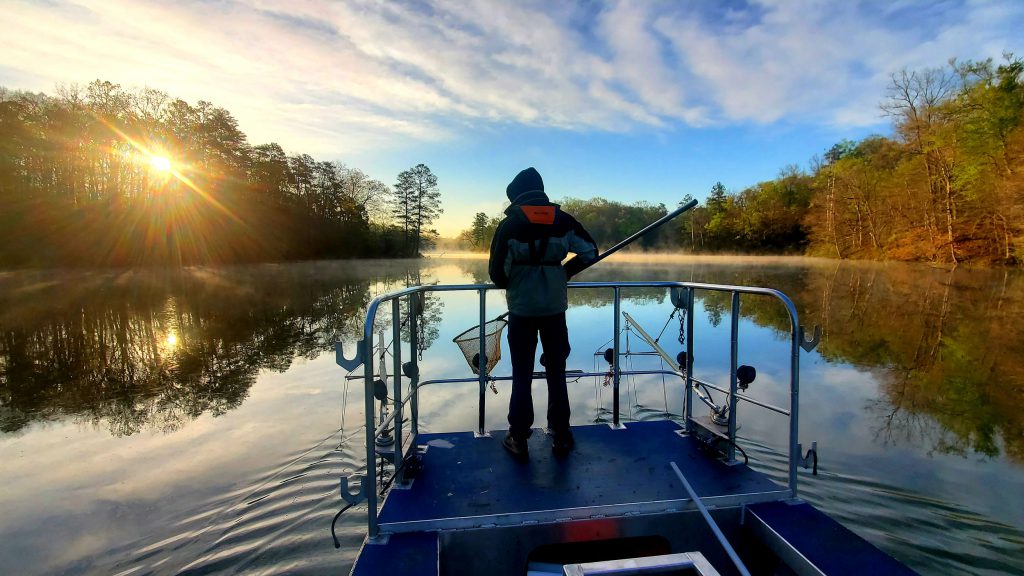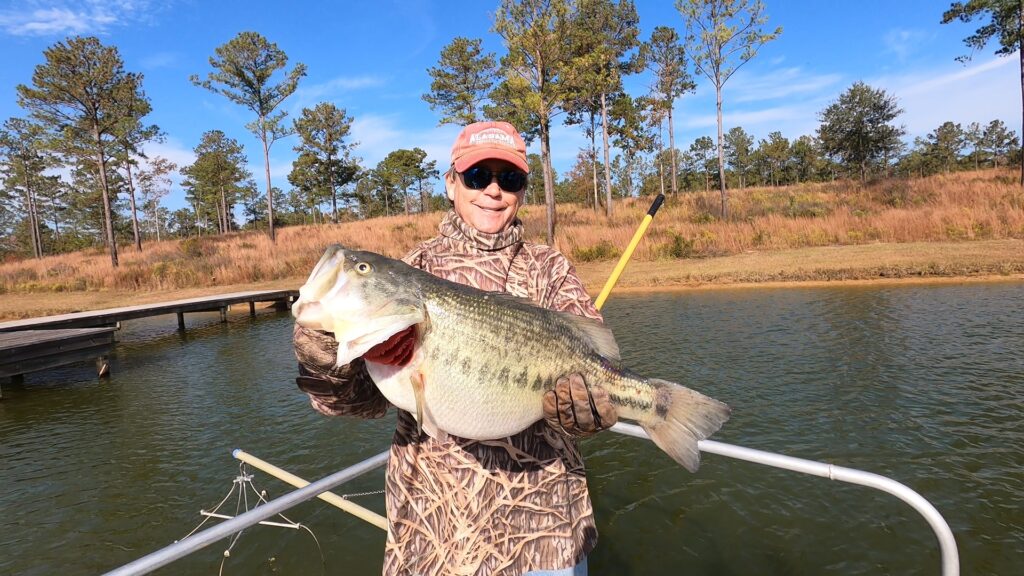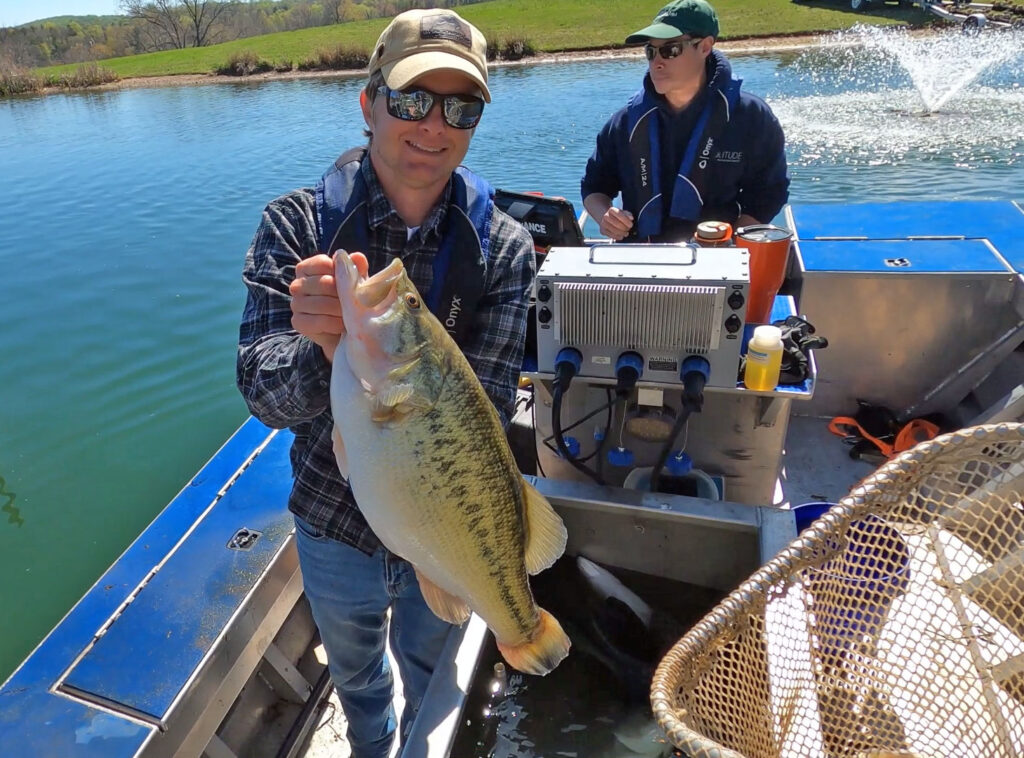
The Benefit of Having All Female Largemouth Bass In Your Trophy Fishery
AS SEEN IN POND BOSS MAGAZINE: Written by Dave Beasley, Fisheries Biologist and Director of Fisheries Management
Trophy Largemouth Bass pushing their growth to the max day after day, year after year are incredibly exciting. Female bass, in particular, provide an opportunity for anglers and managers to interact with bass that have incredible growth rates and body condition. Seeing these fish firsthand never grows old and continually brings motivation to those looking to push bass growth to its limit.
Oftentimes, Largemouth Bass do not reach their full potential, and in many cases, trophy fisheries fail to achieve sustainable success. The reasons for this relate to various limiting factors that continually present themselves. In general terms, there are around thirty common variables that negatively impact trophy Largemouth Bass fisheries and prevent them from succeeding. Each of them requires a level of thought and foresight to ensure they do not negatively impact bass growth. These variables are continually revolving, taking turns with one-another, limiting optimal bass growth. They include blue-green algae, overpopulated predators, draught, flooding, otters, cormorants, low dissolved oxygen levels, high phosphorus, hot water temperatures, forage fish that are too large, forage fish that are too small, and nuisance vegetation – to name some of them.
The variables that limit bass growth depend on the characteristics of the waterbody, its geographical location, fluctuations in seasonal temperatures/weather, management strategies, etc. Unfortunately, all variables must go right for maximum success. Although some are outside of the control of the biologist, they impact the probability that the trophy fishery succeeds and are an integral part of setting objectives and expectations upfront. Oftentimes, just one of them going wrong can cause a significant setback or even lead to failure.
Achieve Success by Adjusting Management Strategies
To maximize the growth potential of bass, biologists must stay agile, shifting management strategies as needed to ensure bass stay on a “maximum growth trajectory.” Like a chess game, the interconnected nature of fisheries and their surrounding ecosystem require accurate foresight. As management actions are taken to prevent or resolve one issue, the fishery and ecosystem shift, elevating the probability that a different variable will limit success. To maintain the highest probability of success, it is important to gain full control over as many of these variables as possible.
How Many Bass Is Too Many?
Having “too many bass” is incredibly detrimental to a trophy largemouth fishery and is one of the most common issues preventing them from succeeding. Trophy bass fisheries typically support 15-40 bass per acre. The number will vary quite significantly depending on the geographic location, the attributes of the waterbody, and its watershed, available budget, etc. The more productive and robust the forage fish population, the more bass the waterbody can support. In general, 25 bass per acre is a good rule of thumb if you are unsure.
Each female Largemouth Bass produces thousands of eggs, resulting in bass populations quickly exceeding the desired number of 15-40 bass per acre every spring. This excellent ability to recruit provides a difficult challenge to biologists and managers trying to maintain a low enough bass population. Failure to maintain low bass numbers quickly shifts the dynamics of the fishery, slowing the positive momentum and forever impairing the growth potential of the bass population.
The reason why a trophy fishery can support so few bass relates back to the waterbodies overall carrying capacity. When cranking along, productive fisheries with a robust forage population often do not exceed 1,000 pounds of fish per acre during their peak forage production months. This production, or forage can be viewed as a revolving door. As larger bait is consumed by bass, smaller bait can grow quickly and fill the void. Waterbodies in warmer climates have a longer forage fish growing season, allowing this revolving door of forage to continue for significantly more days of the year. This allows those waterbodies to support more trophy bass compared to waterbodies further north.
Although many variables go into forage conversion rates, big bass convert forage less efficiently than smaller bass. It has been documented that small bass convert forage at a rate near 10:1. From our experience in controlled settings using all female bass populations, conversion rates by mature female bass range between 15:1 and 20:1. Although 20:1 is on the high side, it allows for conservative projections and expectations when setting bass growth objectives and determining how many bass the fishery can support. When factoring in all other wildlife that consume forage fish, it quickly becomes apparent that a great deal of baitfish will be required.
Why Are Female Bass Easier to Grow?
Staying true to the goal of growing the biggest Largemouth Bass possible, biologists must focus on management strategies and techniques that provide the highest odds of success. Having the best genetics possible is key to accomplishing trophy bass growth goals. Although not always talked about in terms of genetics, female bass have the genetic makeup to reach much larger sizes than male bass. Therefore, managers can double the population of trophy bass by eliminating male bass, allowing angers to double their trophy bass catch rates. From a genetic standpoint, it makes little sense to tolerate the presence of male bass in trophy fisheries.
Equally as important as better genetics is the fact that all female bass fisheries have a finite number of mouths to feed due to the lack of bass recruitment. This greatly improves the probability of maintaining a robust forage base year-round, thus greatly increasing the odds that bass meet growth goals. From a management perspective, all-female populations limit the number of predators, allowing managers to focus their efforts on other limiting factors, further improving the overall odds of success.
How to Cultivate An All-Female Bass Population
Cultivating an all-female bass population can be accomplished in one of two ways. The most common method is to restart the fishery and restock it with all female bass. Restarting requires either draining the waterbody 100 percent or applying rotenone to eradicate the existing fish population. The alternative approach to restarting the system is to harvest all male bass over the course of two or three years using an electrofishing boat. Although somewhat tedious, this is a reliable way to accomplish the goal and is now common practice by some biologists in scenarios where trophy bass are already present. In many cases, all bass recruitment can be halted within the first 12 months.
When deciding if trophy fish management is an approach you want to take, it is important to consider the drawbacks and understand ways to overcome them. In particular, someone looking for high catch rates of Largemouth Bass will be discontent, as low catch-rates are normal. Trophy fisheries are far more geared towards anglers and managers seeking the adrenaline rush and satisfaction of catching big fish, and who can look beyond the slower action.
Although fishing is slower, catch rates can be artificially improved by fishing at times of the year when the bass are most vulnerable to being caught. Limiting the fishing pressure will also help to avoid educating the bass too much and improve catch rates. For those with the financial means, it is not impossible to create high catch rate trophy fisheries, but they do require significantly more money to create and maintain.
With trophy bass as the base layer of enjoyment, a robust population of big sunfish species such as Bluegill and Specklebelly Sunfish are the perfect addition to provide significant entertainment to both kids and adults looking for high catch rate fishing opportunities, as well as the challenge of catching big sunfish. A population of adult sunfish ranging from 1-2 pounds concentrated at fish feeders provides reliable, high impact fishing on those days when high catch rates are desired, or when the bass just don’t want to bite. For some anglers, catching giant sunfish on a lightweight tackle can be just as enjoyable or even more enjoyable than catching trophy bass, helping to offset the low bass catch-rate.
Keep in mind that a waterbody can only support a limited biomass of fish. Therefore, it is important not to have any more of these giant sunfish than you need to satisfy your fishing desires. In general, all forage fish within a waterbody should be small enough for your biggest bass to eat, with the exception being giant sunfish that keep anglers happy. Having too many forage fish that exceed the mouth size of the Largemouth Bass is one of those variables that limits the success of the trophy bass fishery.
Create A Thriving Trophy Fishery with Female Bass
Trophy Largemouth Bass management is difficult, and mistakes have long lasting effects on the fishery’s outcome. Unfortunately, many of the lessons learned in the process of trophy bass management are learned the hard way. Foresight is vital to success, and even then, the probabilities of success are not great. Management decisions should be tailored to strategies that provide the highest odds of success, and the biologist leading the project should be responsible for providing forward guidance. If trophy bass are your passion, I highly suggest you consider an all-female bass population.
Check Out Our Fisheries Management Videos
SOLitude Lake Management is a nationwide environmental firm committed to providing sustainable solutions that improve water quality, enhance beauty and preserve natural resources.
SOLitude’s team of aquatic scientists specializes in the development and execution of customized lake, stormwater pond, wetland and fisheries management programs. Services include water quality testing and restoration, algae and aquatic weed control, installation and maintenance of fountains and aeration systems, shoreline erosion control, muck and sediment removal and invasive species management. SOLitude partners with homeowners associations, golf courses, private landowners, businesses and municipalities. SOLitude Lake Management is part of Rentokil, a leading business services company, operating across the United States, Canada and Puerto Rico.
For more information, visit SOLitude Lake Management at solitudelakemanagement.com, and connect on Facebook, LinkedIn and Twitter.

















